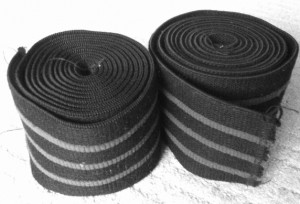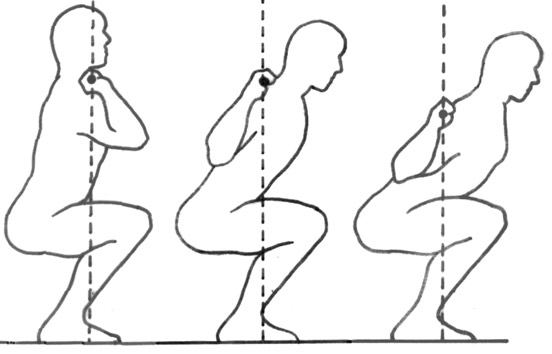A while back I wrote about using wrist wraps to prevent pain with pressing movements (bench press, etc.).
I’ve also used knee wraps occasionally without any ill effects. But I’ll probably put them away for good after reading an article that was published in the Journal of Strength Conditioning. Researchers compared the squatting technique of resistance trained men in the squat with and without the assistance of knee wraps (using 80% of their one rep max). The wraps did increase the “mechanical output” (meaning it would help lift heavier weights). But it also possibly increased their chances of injury:
“The elastic properties of knee wraps increased mechanical output but altered back squat technique in a way that is likely to alter the musculature targeted by the exercise and possibly compromise the integrity of the knee joint. Knee wraps should not be worn during the strength and condition process, and perceived weakness in the knee joint should be assessed and treated.”1
This is a simple risk/benefit issue. If you are a competitive powerlifter then you’ll want to use every advantage possible to lift more weight. Otherwise you may want to consider doing some (or most) of your lifting without wraps.
There is another option I haven’t mentioned here: knee sleeves. Using these may be a happy medium, providing some support (and keeping your joints warm) without altering the mechanics of the lift. I’m just speculating here, since no research has been done on squatting with sleeves (that I’m aware of).
Reference:
1. J Strength Cond Res. 2012 Oct;26(10):2844-9. Wearing knee wraps affects mechanical output and performance characteristics of back squat exercise.


